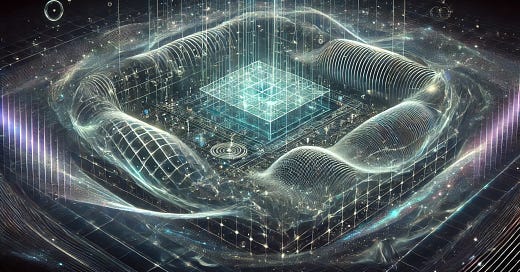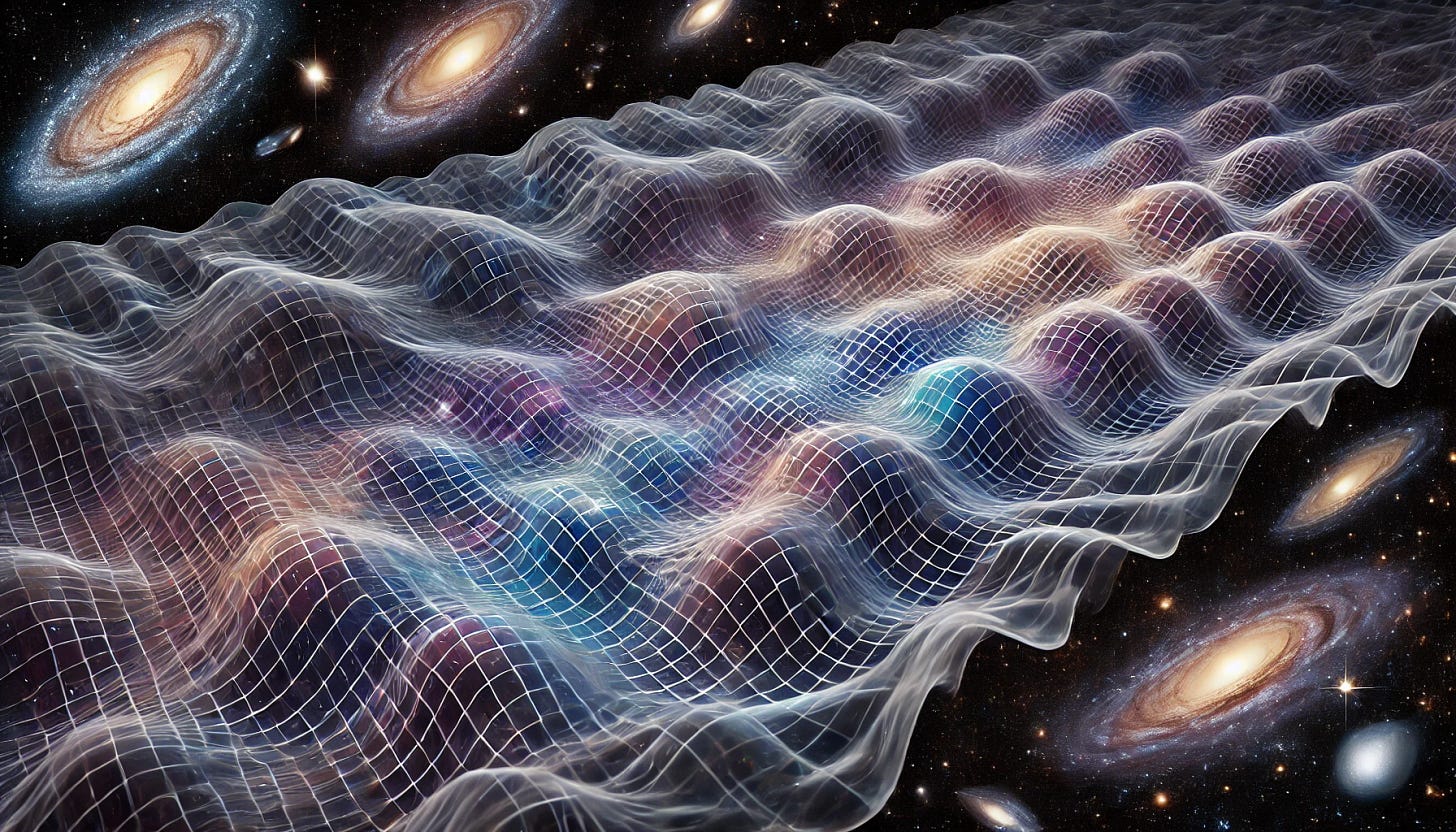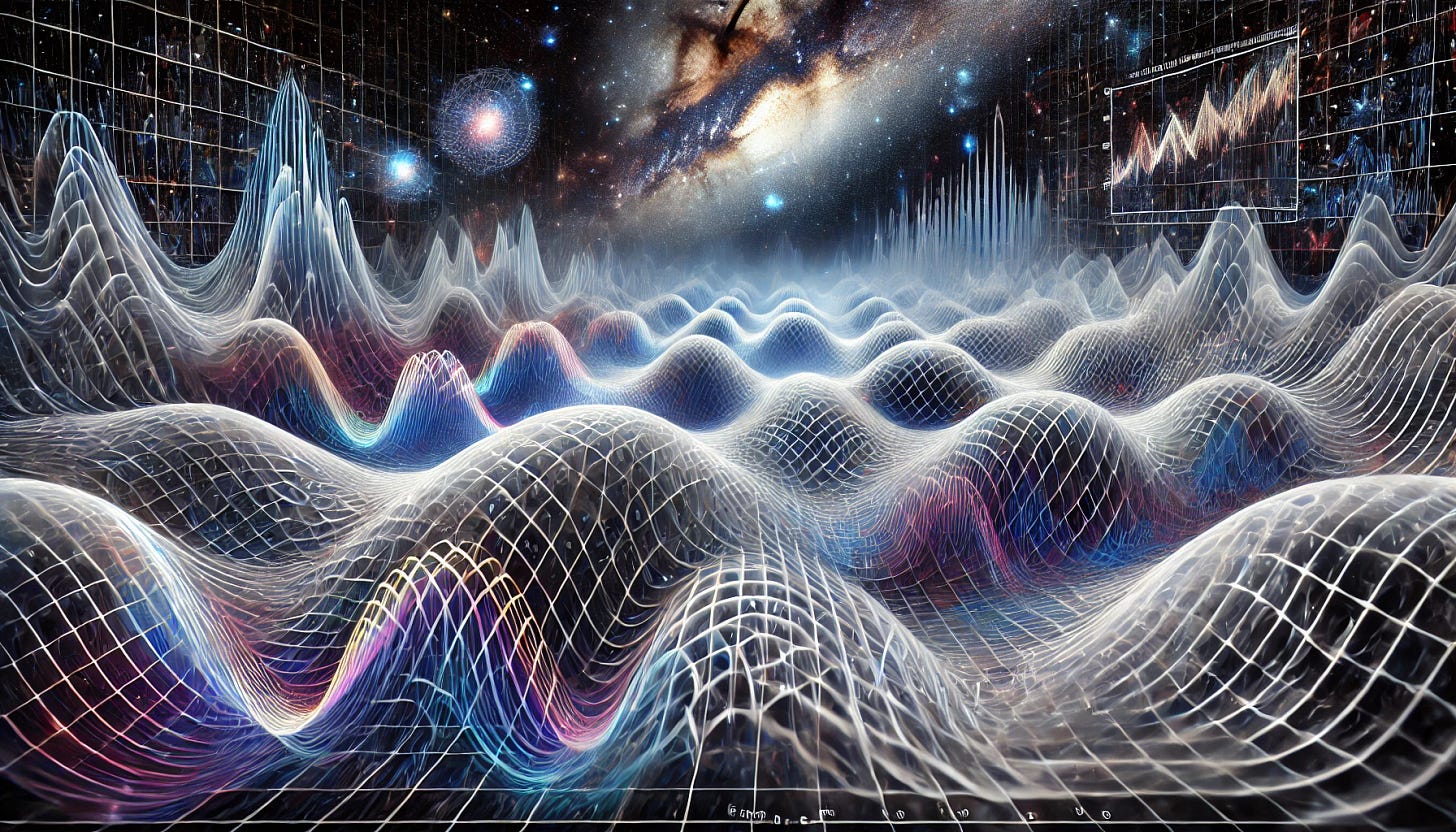Substrate Hysteresis in Cosmic Evolution
Could the Universe's Expansion Be Influenced by a Memory Effect in Spacetime Itself?
Abstract
In materials science, hysteresis describes how a system's current state depends not only on present conditions but also on its history. This concept, well-characterized in ferromagnetic and viscoelastic systems, has intriguing implications when transposed onto the fabric of spacetime itself. This article introduces the speculative idea of substrate hysteresis in cosmology: that spacetime retains residual imprints of prior geometrical configurations, which subtly bias the dynamics of expansion. By exploring analogies between material memory and cosmological evolution, we propose a new lens through which to interpret persistent cosmic acceleration and the elusive behavior attributed to dark energy. We also consider testable predictions, possible geometric markers of spacetime fatigue, and links to emerging theories in quantum gravity.
Introduction: Memory Beyond Matter
The observable universe is expanding at an accelerating rate, a fact attributed to the mysterious influence of dark energy. Yet the mechanism by which this expansion persists remains elusive. Could it be that the vacuum itself exhibits a type of memory, not unlike the behavior of materials under cyclic stress?
In condensed matter physics, hysteresis is the hallmark of a system that "remembers" its past. If the vacuum of spacetime has microstructural degrees of freedom that accumulate deformation across cosmic epochs, the current expansion might not be solely determined by present energy densities, but also by past geometrical configurations, a kind of cosmic mechanical memory.
Geometric Hysteresis and the Vacuum Substrate
Standard general relativity treats spacetime as a smooth, continuously deformable manifold. But several quantum gravity approaches, such as loop quantum gravity and causal dynamical triangulations, suggest that spacetime might have a discrete microstructure. If true, could this structure accumulate geometric "strain" in a way analogous to physical media?
Consider the inflationary epoch, where spacetime expanded by over 60 e-folds in a fraction of a second. If this event imposed a structural deformation upon the quantum vacuum substrate, and that deformation has not entirely "relaxed," it might result in persistent, subtle biases in the expansion dynamics. In essence, the universe could be responding not only to current stress-energy tensors, but also to the residual imprint of past inflationary states.
This residual expansion pressure might manifest as a form of geometric hysteresis: a lag between input (cosmic conditions) and output (expansion behavior), suggesting the vacuum has a form of elasticity or viscoelastic damping.
Observational Consequences and Potential Tests
If cosmic expansion is governed in part by hysteresis-like mechanisms, we might expect measurable deviations from ΛCDM predictions, particularly in the rate of expansion at intermediate redshifts. Small discrepancies already exist between local Hubble constant measurements (e.g., SH0ES project) and those inferred from the early universe (Planck data). Could substrate hysteresis account for this tension?
One hypothetical test involves analyzing anisotropies in cosmic acceleration across the sky. If spacetime carries directional memory of early inflation (akin to anisotropic stress lines in a material), we might detect a weak preferred axis of expansion or subtle variations in the dark energy equation of state, with direction.
Another possibility involves studying relic gravitational wave backgrounds. If geometric hysteresis has a frequency-dependent dissipation profile, some modes may be more attenuated than others, leaving behind an asymmetric spectrum that encodes the vacuum's dissipative memory.
Toward a Theory of Vacuum Fatigue
Extending this hypothesis into the realm of theory, one might describe the vacuum substrate using a Lagrangian with nonlocal or fractional derivatives in the metric tensor, capturing history-dependent effects. This would allow the Einstein field equations to exhibit memory kernels analogous to those in rheological models.
A speculative candidate for such a framework could be inspired by fractional generalizations of classical field theory (e.g., Riewe 1996) or extensions of causal set theory, where memory is built into the causal structure of spacetime itself.
Moreover, this framework could provide a novel interface between thermodynamics and cosmology: just as entropy governs irreversibility in materials, the irreversible nature of expansion under hysteresis could encode an arrow of time rooted in vacuum microstructure.
Speculative Technological Implications
If spacetime does retain memory through a hysteresis-like mechanism, then future technologies might exploit this feature to modulate or probe vacuum dynamics. One conceptual avenue involves the engineering of high-frequency gravitational field perturbations within a controlled cavity, intended to excite or erase localized hysteresis imprints in the vacuum fabric.
This could yield experimental platforms analogous to stress cycling in viscoelastic polymers, where repeated metric perturbations at different frequencies could reveal non-linear relaxation or phase transition-like thresholds in the vacuum itself. Such a setup might inform speculative propulsion systems that manipulate vacuum stress-memory regions to generate asymmetrical inertial responses, a theoretical precursor to reactionless drives or gravitational steering systems.
Furthermore, the hysteretic memory of spacetime could allow for the encoding of information within structured vacuum zones. If information from prior states subtly biases future dynamics, this could inspire a new class of computational substrates, "hysteric field computers", where computation occurs not through conventional logic gates but by guiding the dynamic evolution of the vacuum through memory imprints.
A Universe That Remembers
The concept of substrate hysteresis offers a new perspective on cosmic expansion: one in which the vacuum is not merely a passive stage but a dynamic medium with memory. If the expansion history of the universe imprints stress-like features on the vacuum's structure, we might find echoes of these features in current acceleration dynamics, subtle anisotropies, or the dissipation of gravitational modes.
Though highly speculative, this model is grounded in well-understood physical analogies and aligns with efforts to view the vacuum as a complex, information-rich medium. Future observational refinements and deeper theoretical models may reveal whether the universe truly remembers its own unfolding.
References
Riess, A. G., et al. (2019). "Large Magellanic Cloud Cepheid Standards Provide a 1% Foundation for the Determination of the Hubble Constant." The Astrophysical Journal, 876(1), 85.
Planck Collaboration. (2018). "Planck 2018 results. VI. Cosmological parameters." arXiv preprint arXiv:1807.06209.
Rovelli, C. (2004). Quantum Gravity. Cambridge University Press.
Riewe, F. (1996). "Nonconservative Lagrangian and Hamiltonian mechanics." Physical Review E, 53(2), 1890.
Eling, C., Guedens, R., & Jacobson, T. (2006). "Non-equilibrium thermodynamics of spacetime." Physical Review Letters, 96(12), 121301.







I can't believe I found someone writing about these topics... and I already happen to follow them. I have quite a robust body of work around a similar thesis: memory-driven, coherence-based, and recursive universe, which echos a lot of what you've described, not only in this article but others (I like the detail you've provided)... I can see you are on the hunt for answers and using AI to help you. These are the questions I have always wanted to answer as well, and AI is the only brainstorming buddy I've been able to rely on to make progress. Can't wait to read more. Keep it up.
This is an idea I've been marinating on for a while now, while have tried to make sense of it through the lens of spirituality, religion, and everything else abstract, I feel you have really hit the nail on the head with what I've been able to grasp conceptually, but have been unable to effectively connect to that logical, systemic language. I'll be posting my own substack thoughts within the next hour or so if you want to have a check of that out! :)